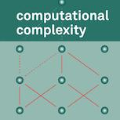Massive multiple-input multiple-output (MIMO) is a key technology used in fifth-generation wireless communication networks and beyond. Recently, various MIMO signal detectors based on deep learning have been proposed. Especially, deep unfolding (DU), which involves unrolling of an existing iterative algorithm and embedding of trainable parameters, has been applied with remarkable detection performance. Although DU has a lesser number of trainable parameters than conventional deep neural networks, the computational complexities related to training and execution have been problematic because DU-based MIMO detectors usually utilize matrix inversion to improve their detection performance. In this study, we attempted to construct a DU-based trainable MIMO detector with the simplest structure. The proposed detector based on the Hubbard--Stratonovich (HS) transformation and DU is called the trainable HS (THS) detector. It requires only $O(1)$ trainable parameters and its training and execution cost is $O(n^2)$ per iteration, where $n$ is the number of transmitting antennas. Numerical results show that the detection performance of the THS detector is better than that of existing algorithms of the same complexity and close to that of a DU-based detector, which has higher training and execution costs than the THS detector.
翻译:在第五代无线通信网络和其他网络中,大量投入的多重产出(MIMO)是一项关键技术。最近,提出了各种基于深层学习的IMIMO信号探测器。特别是,深度开发(DU),涉及现有迭代算法的解滚和嵌入可训练参数,已经应用了惊人的探测性能,尽管DU的可训练参数数量少于传统的深神经网络,但与培训和执行有关的计算复杂性一直存在问题,因为基于DU的IMO探测器通常使用矩阵来改进探测性能。在本研究中,我们试图用最简单的结构来建造一个基于DU的可训练MIMO探测器。基于HB-S(HS)转换和DUDU的拟议探测器被称作可训练的HS(THS)探测器。它只需要0.1美元的培训性参数,其培训和执行费用为每升1美元,其中传输天线的数量为$(n2美元)。数字显示,以最简单结构为基的MIMO为基的MIMO的可训练性能性能比现有的甚高的THS的探测性测算法成本要好。


